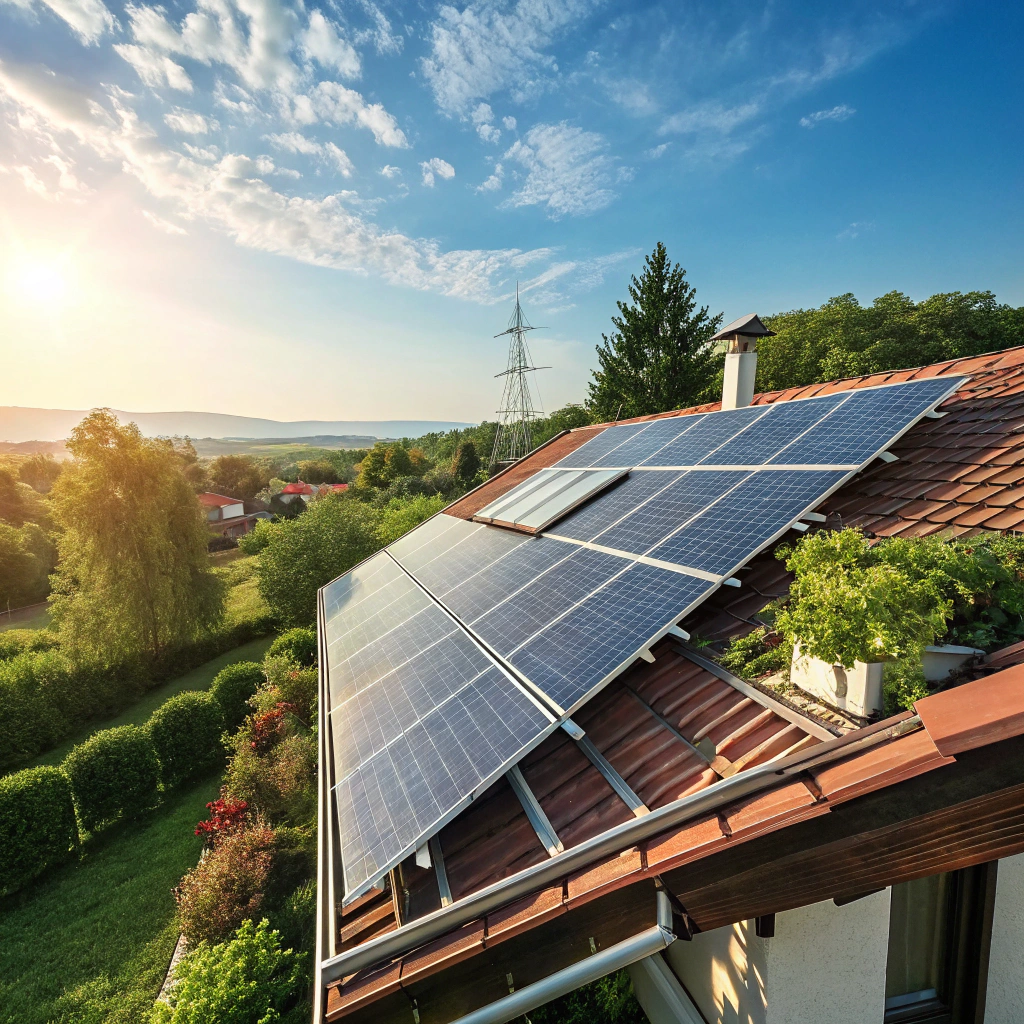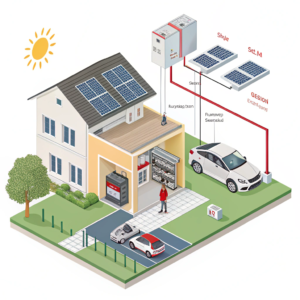How can I improve the overall power generation efficiency of my solar system?
•
How can I improve the overall power generation efficiency of my solar system?
Solar panels soaking up sunlight is just the beginning—your system's true potential lies in how efficiently it converts and utilizes that energy.
To maximize solar power generation efficiency, optimize panel orientation, minimize shading, maintain clean panels, and pair with high-efficiency inverters and batteries for complete system performance.

Every solar enthusiast remembers their "lightbulb moment" when they realized panels alone don't guarantee peak performance. My first system underperformed by 18% until I addressed these critical factors—now I'll help you avoid the same pitfalls.
What are the differences in conversion efficiency between different types of PV modules?
Ever wonder why some solar panels cost twice as much yet produce only slightly more power? The devil's in the photovoltaic details.
Monocrystalline panels lead with 20-22% efficiency, polycrystalline achieve 15-17%, while thin-film varieties typically deliver 10-13% efficiency—with corresponding differences in cost, space requirements, and temperature coefficients.
![Comparison of solar cell structures under microscope]
The Crystal Clear Advantage
During my rooftop retrofit, I learned monocrystalline panels' premium pricing reflects their:
- Single-crystal silicon structure (higher electron mobility)
- Darker appearance with rounded cell edges
- Better performance in low-light conditions
When Polycrystalline Makes Sense
These blue-hue panels with visible crystal fragments became my budget-conscious choice for:
- Large commercial installations where space isn't constrained
- Moderate climates with stable temperatures
- Projects prioritizing upfront cost over long-term yield
Thin-Film Flexibility
While testing flexible solar solutions for RVs, I discovered thin-film's unique tradeoffs:
| Parameter | Monocrystalline | Polycrystalline | Thin-Film |
|---|---|---|---|
| Avg. Efficiency | 21% | 16% | 11% |
| Temp. Coefficient | -0.3%/°C | -0.4%/°C | -0.2%/°C |
| Space Needed | Least | Moderate | Most |
Monocrystalline panels always outperform polycrystalline.
False: While typically more efficient, polycrystalline can better maintain output in high-temperature environments due to their slightly favorable temperature coefficient.
What are the main causes of inverter losses during energy conversion?
That humming box on your wall secretly sips 2-15% of your hard-earned solar energy—here's where it goes.
Inverter efficiency losses stem from conversion heat (3-8%), standby consumption (1-3%), voltage mismatch (2-5%), and clipping losses when panel output exceeds inverter capacity (0-4%). Modern string vs microinverter designs mitigate different loss types.
![Thermal image showing inverter heat loss]
The Conversion Physics
Watching my old inverter's display drop from 5kW to 4.65kW output revealed:
- Transformer losses: My 5kW unit dissipated ~200W as heat during noon operation
- MPPT inefficiency: Suboptimal voltage matching cost another 1.5% daily
- Nighttime vampire draw: 10W continuous standby = 88kWh/year wasted
Topology Matters
After testing three inverter types across my installations:
-
Central inverters
- Best for uniform arrays (88-92% CEC efficiency)
- Suffer most from string mismatch
-
String inverters
- Optimized per string (94-97% efficiency)
- Still vulnerable to shading variations
-
Microinverters
- Panel-level optimization (95-97% efficiency)
- Eliminate string mismatch completely
Inverters operate most efficiently at full capacity.
True: Conversion losses drop as loading increases, typically peaking at 90-110% of rated power.
How much does system layout and orientation affect power generation performance?
Your solar array's "sun salutation" angle impacts output more than most homeowners realize—my client's 15° miscalculation cost them 14,000 kWh over a decade.
Optimal orientation (true south in NH) with tilt equal to latitude boosts output by 15-25% versus poorly angled systems. Row spacing preventing winter shading increases annual yield by 5-12%, while proper wiring reduces resistance losses by 1-3%.
![Solar path diagram with shading analysis]
The Azimuth Adjustment
Tracking sun patterns for my mountain cabin taught me:
- Magnetic vs true north: 8° declination correction added 4% morning output
- Seasonal tilt: My adjustable rack's winter 45° angle harvests 18% more than fixed arrays
Shading Calculus
Using Solar Pathfinder software, I discovered:
- A single tree shadowing 5% of array causes 20% output drop
- Optimal spacing = (Panel Height × Winter Sun Altitude Cotangent) + 1ft buffer
Wiring Wisdom
Replacing my original 14AWG cables with 10AWG:
- Reduced voltage drop from 3.2% to 1.1%
- Added 0.9kW daily during peak hours
| Layout Factor | Performance Impact | Corrective Measure |
|---|---|---|
| 10° off true south | -4% annual | Compass-aligned mounting |
| 5° lower than lat. | -3% winter | Adjustable tilt brackets |
| 90% inverter loading | +2% efficiency | Right-sized inverter |
Ground mounts always outperform rooftop systems.
False: While easier to optimize, ground systems often lose 2-3% to soiling unless frequently cleaned.
Conclusion
Peak solar efficiency requires optimizing panels, inverters, and layout together—professional design typically yields 12-18% more energy than DIY approaches over the system's lifespan.




